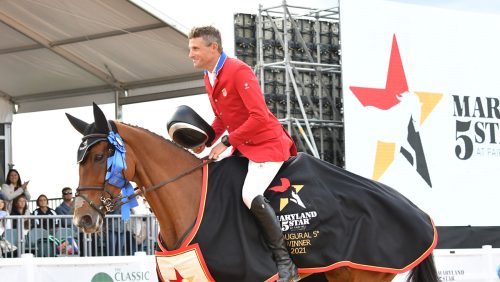We traditionally illustrate articles with action shots of the winners, and there’s a nice photo of the Pessoa/USEF Medal Finals winner, Jessica Springsteen, on page 8.
But even though a photo might show you what Springsteen looks like, and what color her horse is, unfortunately, it won’t tell you why she won. That photo captures a fraction of a second over one fence, while the performance Springsteen turned in to win encompassed about 30 fences jumped in three rounds of judging. And in between those jumps there was quite a bit of cantering.
In a very strict sense, the term “equitation” describes the rider’s position on the horse, and the judges certainly look to see that each rider has a classic, correct position. But in 11 years of reporting on the Medal Finals I’ve seen that it’s the effectiveness of that correct position that’s really being judged.
Equitation finals aren’t about how prettily you can sit on a horse. The competition is about how smoothly and effortlessly you can negotiate a course, putting your horse in the best possible place to make the best possible effort over the next fence. By the time riders qualify for the finals, their basic form in the saddle is mostly confirmed, and there aren’t major position flaws. What separates the winners from the others is something more, however.
My fellow intrepid reporter at the Medal Finals, Mollie Bailey, captured it. She glanced up from her computer at a rider cantering around the course, and said to me, “It’s funny, you can tell if they’re going to be good or not just by watching them canter for three strides.”
ADVERTISEMENT
It was an offhand comment, but it really stood out to me because it’s true. The essence of what makes a rider win the equitation finals is her authority and control over her horse’s canter—everywhere on course. Even if you’re technically in the perfect position, if your horse falls into the turn on his forehand, or if you don’t have him in front of your leg to a combination with a forward distance, you’re not going to win.
The riders who make the stand-by list know exactly where each hoof is going to fall every stride and exactly how far away they are from the next jump at all times. There’s a steady, rhythmic, forward pace to their course, with no major changes of tempo or speed. They don’t make obvious striding adjustments but subtly adjust their horse’s stride to meet the fences exactly right. And there’s an overall sense of calm assurance to their rounds.
The goal of all this testing—and something that sometimes gets lost in the debates—is getting the horse to the jump at a distance, pace and balance that allows him to shape a beautiful bascule and clear the fence safely. It’s not enough to pose in the air over a jump if the approach you rode prevented your horse from jumping his best.
Riding a forward, straight and balanced canter is the key to winning an equitation final. If you get the canter right, the jumps just happen. That’s what equitation, and riding, is all about.
So, when you read about this fall’s equitation winners, check out their photos and know that that one moment wasn’t solely what the judges were judging—it was countless moments before and after as well.














